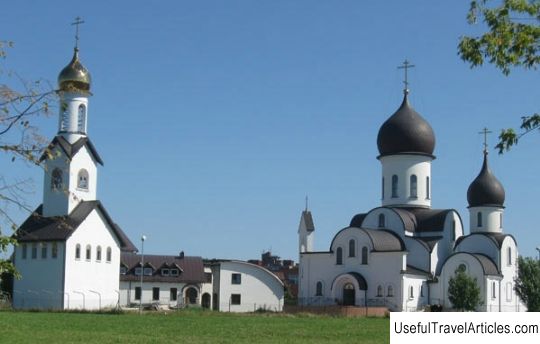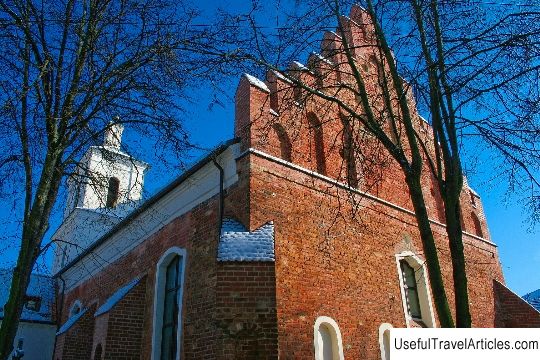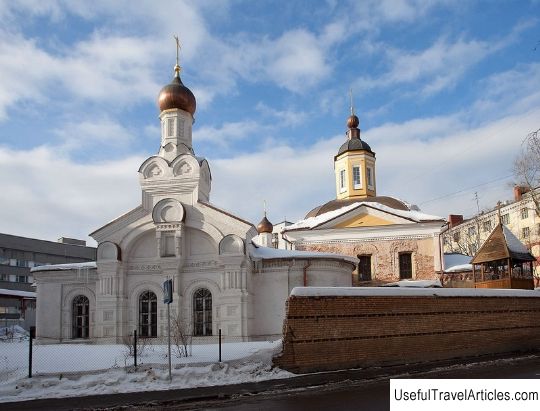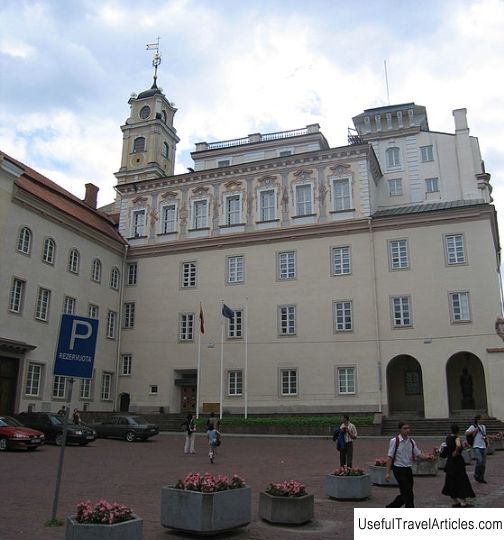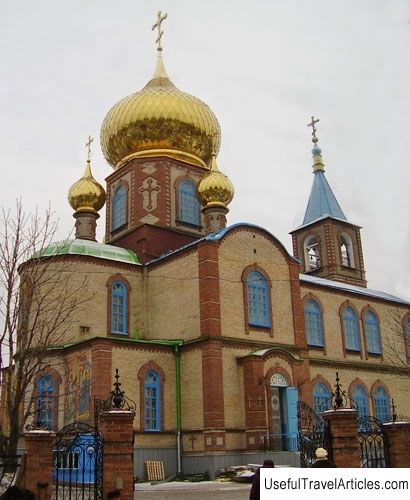St. Nicholas Church (Vilniaus Sv. Nikolajaus) description and photos - Lithuania: Vilnius
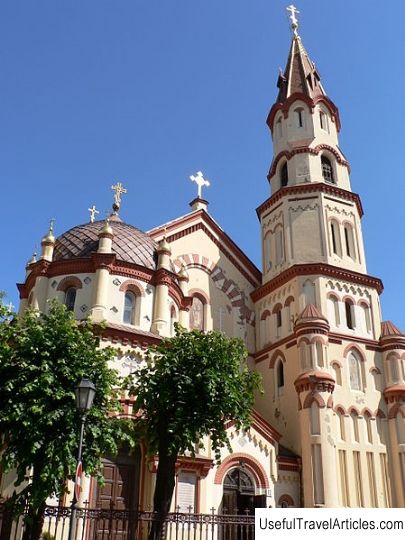
St. Nicholas Church (Vilniaus Sv. Nikolajaus) description and photos - Lithuania: Vilnius. Detailed information about the attraction. Description, photographs and a map showing the nearest significant objects. The name in English is Vilniaus Sv. Nikolajaus. Photo and descriptionSt. Nicholas Church, named after the transfer of the relics of St. Nicholas the Wonderworker and founded in 1340, is one of the oldest Orthodox churches in Lithuania. Initially, the wooden church was built by order of the wife of the Duke of Lithuania Julianna. The church acquired its stone appearance in 1514 thanks to Prince Konstantin Ostrog. The rector of the church was Archpriest Vasily Novinsky. The Church of St. Nicholas the Wonderworker was considered one of the very first Christian churches in the city of Vilnius. As you know, Nicholas the Wonderworker has long been recognized as the patron saint of the city, and the Vilna martyrs Eustathius, John and Anthony, who were executed in 1347, were initially buried in the Church of St. Nicholas, because it was assumed that it already existed in the time of Gediminas. By the 16th century, the temple almost completely fell into decay. The great Lithuanian hetman Konstantin Ostrozhsky contributed to its revival. He erected a new Gothic church on the same foundation. But in 1609, by order of King Sigismund, the church passed into the hands of the Uniates. Eleven more churches were given over to their rule. In the late 1740s, the temple was severely burned. Later it was restored, but in the Baroque style. On four sides, the church was surrounded by houses, over which a bell tower was built. It was in this form that the church was depicted in watercolor by I.P. Trutnev on canvas 1863. It is believed that some elements of the style of the temple were created by the hands of I.K. Glaubits. In 1839, the church again passed to the Orthodox, although initially it was attributed to the Cathedral of St. Nicholas, now bearing the name of the Church of St. Casimir. But by 1845, the temple again began to be called a parish church with its own parish. Closer to 1863, the inhabitants of Lithuania, as well as M.N. Muravyov raised the necessary funds for the construction of a church dedicated to the holy Archangel Michael. These funds were transferred into the hands of Muravyov, only he decided to postpone the construction of a new church in connection with the expediency of restoring the Nikolskaya church to its original form. In addition, reconstruction of other temples was planned. Muravyov also agreed to collect donations from all over Russia. In the second half of the 1860s, according to the project of the academician of arts A.I. Rezanova in collaboration with the architect N.M. Chagin, the church was reconstructed in the "Russian-Byzantine style." It was decided to demolish all buildings surrounding the temple; the construction of a metal lattice was also proposed. On the left side of the facade of the temple, the Mikhailovskaya chapel was built, named after the Archangel Michael, patron saint M.N. Muravyov. On the walls on the sides of the entrance to the chapel there are memorial marble tablets: one of them briefly describes the history of the church, and the other lists all the merits of M.N. Muravyov. The church itself has five domes, each covered with zinc. The outer walls of the facade are decorated with columns on three sides, and the windows are framed by frames. The main facade of the building is decorated with icons of St. Nicholas the Wonderworker and the Ostrobramskaya Mother of God. The face of the Archangel Michael is depicted in the inside of the chapel in the form of a mosaic, and icons made of carved oak are located on the walls. The wall of the main facade of the church, right above the entrance, is decorated with the image of St. Nicholas the Wonderworker. On the wall of the bell tower there is an image of Prince Alexander Nevsky, canonized as a blessed saint. The ceremonial illumination of the restored church took place in November 1866. It is known that since 1871 John, who is the father of Vasily Kachalov, served as rector for more than twenty years in the church of St. Nicholas the Wonderworker. Subsequently, the famous Russian Soviet actor was born and spent his entire childhood, up to 1893, in a house that was located next to the Nikolskaya Church - a memorial plaque installed on the wall of the church tells about this fact. numbered among the faithful saints.The solemn lighting of the renewed church took place in November 1866. It is known that since 1871 in the church of St. Nicholas the Wonderworker, John, who is the father of Vasily Kachalov, served as rector for more than twenty years. Subsequently, the famous Russian Soviet actor was born and spent all his childhood, up to 1893, in a house that was located next to the Nikolskaya Church - a memorial plate installed on the wall of the church tells about this fact. numbered among the faithful saints.The solemn lighting of the renewed church took place in November 1866. It is known that since 1871 John, who is the father of Vasily Kachalov, served as rector for more than twenty years in the church of St. Nicholas the Wonderworker. Subsequently, the famous Russian Soviet actor was born and spent his entire childhood, up to 1893, in a house that was located next to the Nikolskaya Church - a memorial plaque installed on the wall of the church tells about this fact.      We also recommend reading Lake Yastrebinoe description and photo - Russia - Leningrad region: Priozersky district Topic: St. Nicholas Church (Vilniaus Sv. Nikolajaus) description and photos - Lithuania: Vilnius. |
